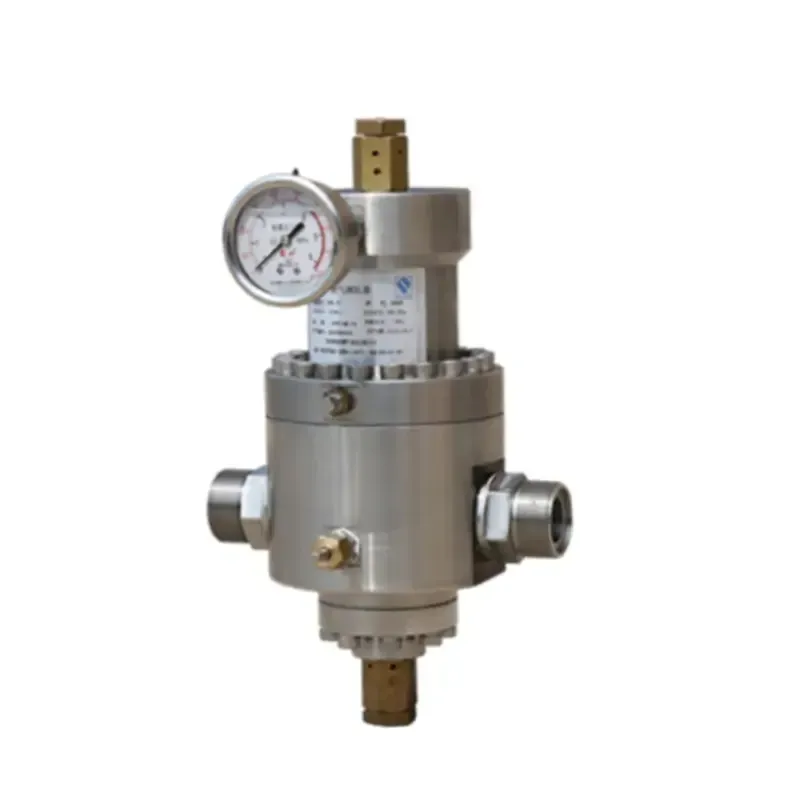
Nov . 11, 2024 09:01
Back to list
gas regulator
Understanding Gas Regulators Essential Tools for Safe and Efficient Gas Supply
Gas regulators play a vital role in various applications, from residential heating systems to industrial processes. These devices are designed to control and maintain the pressure of gases delivered from storage tanks, pipelines, or other sources, ensuring a steady, safe supply of gas for different uses. This article delves into the importance, types, and functionalities of gas regulators, highlighting their significance in both household and industrial settings.
What is a Gas Regulator?
A gas regulator is a mechanical device that reduces the high pressure of gas from a source, such as a gas cylinder or supply line, to a lower, manageable pressure suitable for use. Without gas regulators, users would face the risk of either too much pressure causing equipment malfunction or accidents, or too little pressure leading to inefficient operation.
Typically, gas regulators are essential for systems that utilize various gases, including natural gas, propane, and butane. They ensure that gas appliances operate safely and efficiently while maintaining the appropriate pressure levels. This becomes especially important in environments where consistent gas delivery is crucial, such as in heating systems, kitchens, and manufacturing processes.
How Gas Regulators Work
Gas regulators function on a simple principle of mechanics. When gas flows through a regulator, it first encounters a diaphragm that is calibrated to respond to changes in pressure. As gas comes in at a high pressure, it pushes against the diaphragm, which in turn actuates a valve system to adjust the gas flow and reduce the pressure before it exits. This process allows for a stable output pressure, ensuring that appliances receive the correct amount of gas to operate effectively.
Most regulators also include safety features such as relief valves and venting mechanisms. These components prevent over-pressurization, which could lead to dangerous situations, including explosions or leaks. Regular maintenance and periodic inspections are crucial to ensure that these safety features remain functional.
Types of Gas Regulators
There are several types of gas regulators, each suited for different applications
gas regulator

1. Single-Stage Regulators These regulators reduce the gas pressure from the source to a designated level in one step. They are often used in low-pressure applications and are simpler in design.
2. Dual-Stage Regulators These devices offer a two-step pressure reduction, which helps maintain a consistent outlet pressure, even when the inlet pressure fluctuates. This type is particularly useful for high-demand appliances and in commercial settings.
3. Adjustable Regulators These regulators allow users to manually adjust the outlet pressure to suit specific requirements. They are versatile and often used in laboratory settings or other applications where precise pressure control is necessary.
4. Regulator with Overpressure Protection These regulators are equipped with extra safety features to handle overpressure situations, making them suitable for high-risk environments.
Applications of Gas Regulators
Gas regulators are indispensable in various fields. In residential applications, they ensure that gas appliances such as furnaces, water heaters, and stoves operate safely and efficiently. In industrial settings, they are crucial for processes involving combustion, chemical reactions, and the operation of machinery that requires specific gas pressure for optimal performance.
In addition to conventional uses, gas regulators are increasingly vital in renewable energy systems, such as biogas or hydrogen fuel systems, where they help manage the supply and pressure of gas derived from sustainable resources.
Conclusion
The importance of gas regulators cannot be overstated. They are essential for maintaining safety, efficiency, and reliability in gas supply systems across different applications. Understanding their types, functionalities, and maintenance needs can go a long way in ensuring safe operations in both residential and industrial settings. As technology advances and the importance of gas supply in energy systems grows, the role of gas regulators remains crucial in facilitating safe and effective gas management. Thus, investing in quality gas regulators and adhering to maintenance schedules is a significant step in safeguarding against potential hazards associated with gas usage.
Next:
Latest news
-
Safety Valve Spring-Loaded Design Overpressure ProtectionNewsJul.25,2025
-
Precision Voltage Regulator AC5 Accuracy Grade PerformanceNewsJul.25,2025
-
Natural Gas Pressure Regulating Skid Industrial Pipeline ApplicationsNewsJul.25,2025
-
Natural Gas Filter Stainless Steel Mesh Element DesignNewsJul.25,2025
-
Gas Pressure Regulator Valve Direct-Acting Spring-Loaded DesignNewsJul.25,2025
-
Decompression Equipment Multi-Stage Heat Exchange System DesignNewsJul.25,2025

